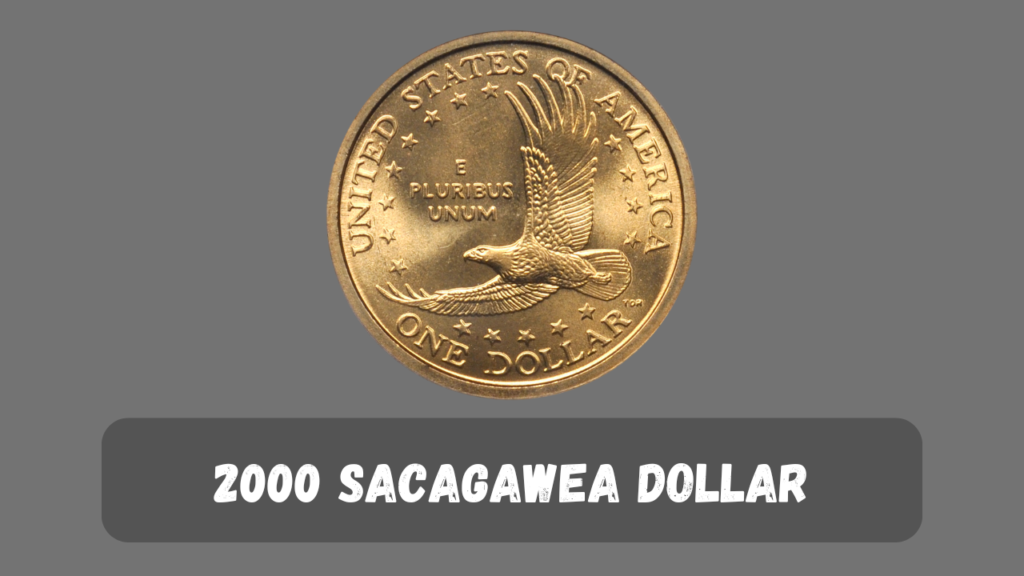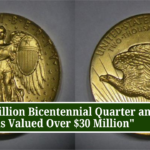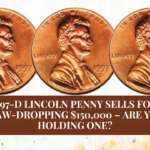Their historical, artistic, and cultural views of the United States make American coins unique. With the scarce nature of some coins, individuality in designs, and the fact that these coins reflect history, their value has come to rise above their face values. Here, in this article, we will look at four of the most famous coins of the United States and how they hold surprisingly huge values in the market.
1909-S V.D.B. Lincoln Penny

V.D.B. Lincoln Penny Overview In 1909, Victor David Brenner designed this coin to commemorate the 100th anniversary of Abraham Lincoln’s birthday. There is much desire for the 1909-S edition as it is considered to be the first Lincoln cent. On the obverse side of the San Francisco-coined cent, Brenner’s initials “V.D.B.” are on the reverse side of the cent.
The 1909-S V.D.B. penny is very rare, especially in high-grade, because only 484,000 of these pennies were ever struck before the initials were removed. And the coin is certainly highly desired.
The 1909-S V.D.B. cent can fetch several thousand dollars if circulated. However, those that are in uncirculated condition and mint can escalate in value to over one hundred thousand dollars. Because of its popularity as a widely sought after collector’s item, a flawless specimen even fetched the price of $1.7 million in the year 2010.
1933 Double Eagle

Facing the obverse side of this limited-gold coin is the iconic design of Lady Liberty by the famous sculptor Augustus Saint-Gaudens. The reverse side features an eagle flying above the sky. As it was minted in the time of preparing itself for relinquishing the gold standard, the 1933 Double Eagle is without doubt a coin that has artistic and also a controversial quality.
President Franklin D. Roosevelt issued an executive order that would result in the confiscation and melting of most of the gold coins in question, among them the 1933 Double Eagle. It was a product of the Great Depression. Only a few escaped. Among them is once King Farouk of Egypt.
The price realized for this 1933 Double Eagle is $7.59 million and it is the costliest American coin that has ever been sold. In fact, the record still stands at the high price paid when it was sold. Of course, due to the rarity of the coin and its truly exciting story, even those that are not nearly as perfect in form are worth several million dollars more.
1913 Liberty Head Nickel

One of the rarest coins in the United States is the Liberty Head nickel. In 1913, it was minted, but only five specimens can be found today. The U.S. Mint had planned on changing to the Buffalo nickel, but they just released the Liberty Head nickel.
All five of the known Liberty Head nickels of 1913 have interesting stories of their own. The “Henry Miller coin” one was lost for decades, and then it turned up; the denomination is shown by a simple “V” for five cents on the reverse and Lady Liberty on the obverse.
Today, a 1913 Liberty Head nickel sold for over $4.5 million according to a record sale in 2018. One of the coins that everybody wants due to its rarity, mysterious history, and rich ownership history.
2000 Sacagawea Dollar

Generally: The Sacagawea dollar was introduced in 2000 with Sacagawea, a Shoshone woman who accompanied the Lewis and Clark Expedition in recognition of accomplishments made by Native Americans. Although it was supposed to be a circulating coin, the public did not take long to desert it.
Certain types and mistakes have rendered some Sacagawea dollars quite collectible, although the generic Sacagawea dollar still retains its face value. Although it was issued as a promotion, the “Cheerios” dollar, which is an improved coin over the regular version with more defined tail feathers, is substantially worth far more than the face value of the coin.
However, error coins or high-grade specimens may bring $1,000-$5,000. Not to mention the majority of Sacagawea dollars are worth just one dollar! The “Cheerios” dollar from the 2000-P has become so valuable owing to the unique feather pattern that it displays.
These factors, including design flaws, historical events, and minting errors, may push the price of a coin upward. Examples of coins falling into each of these categories are provided. These coins are more than monetary resources for collectors; they hold a treasure of cultural significance and represent potential investments.








